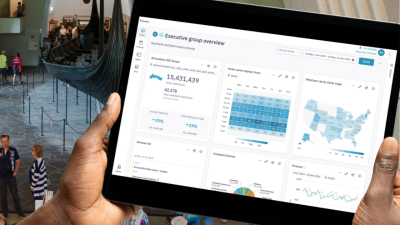The charitable sector is going through a period of painful self-examination about the unintended side effects of well-intentioned philanthropic efforts.
TOMS, the popular “profit for good” shoe company that donates a pair of shoes to a needy child for every pair bought, has come under fire for dropping an “economic bomb on local industry” by effectively suppressing the business of local cobblers. US international food aid is criticized for destroying local farming communities. Some commentators even question whether domestic government aid programs are, essentially, subsidizing industries that don’t pay a living wage.
It’s getting to the point where some wonder if the best solution to social problems associated with poverty is simply giving money to poor people. GiveDirectlyis trying out this concept in Kenya, and so far their rigorous evaluation of impact of their work looks pretty good.
I’ve begun to think about the unintended side effects of philanthropy in the cultural sector. It seems like funders give lip service to sustainability, yet many funders dole out money in a way that undermines efforts to create services with sustainable business models. Philanthropic support can damage the overall ecology of nonprofit finances by subsidizing underpriced services (like professional education) and lowering museums’ price point for buying these services. This makes it hard for service organizations (like museum associations) to build self-sustaining, high performing programs that charge a fair market price.
See if this (generic) example sounds familiar: a nonprofit gets a three-year grant to deliver professional training to its sector. And the training is free! For three years—then it goes away. (Nowadays, funders rarely underwrite a program indefinitely, and they rarely are willing to step in to provide continued support for programs developed as signature projects by other foundations, unless the recipient organization can put a significant new twist on it.) Sounds great, yes? For the people and organizations benefiting from the training, maybe. But meanwhile, that three years of “free” has helped to create a market in which people are unwilling (and farther down the road, unable) to pay for that same service.
My personal experience is with the museum sector, but as I work more often across sectors, as I share content we’ve developed through CFM, I can’t help but notice how messed up our economy is, even relative to other nonprofits. People who work in museums have such a low price point for things like professional courses and professional conferences, that it is really difficult for the organizations supporting the sector (local, state, regional, national) to build robust, effective, sustainable infrastructure to deliver these services. I wonder how much of this is due to the constant influx of small bits of funding that temporarily support programs that are great while they last, but can’t stand on their own non-subsidized legs.
Museums might argue they simply can’t afford to pay the true cost of a sustainable educational program. To which I would respond that there are lots of necessary things nonprofits aren’t usually factoring into their business plans because they think they can’t afford them. Reform activist Dan Pallotta argues this includes competitive salaries, adequate marketing budgets, and funds to invest in growth. Jesse Rosen, president & CEO of the League of American Orchestras, feels that for his constituents it includes building sufficient financial reserves to support risk taking. To this growing list I would add professional development, especially if museums are going to diversify their hiring to recruit people who may have little background in nonprofits in general, or museums in particular.
If professional training is really valuable, and essential, then the business model for museums needs to include generating sufficient funds to pay for it. And if one or six or a dozen organizations have a steady income stream from satisfied consumers paying a fair price for these services, they ought to be able to ramp up their programs, and help make the programs cost effective and affordable via efficiencies of scale.
These musing are just one line in the mental sketch I am trying to draw of the changing shape of museum financial models and the nonprofit economy as a whole. How does our dependence on unpaid interns, and volunteers, affect museum salaries? How do museum salaries affect who we attract into the sector, and how they shape their own benchmarks of success? How do our personal benchmarks for success affect our expectations for the impact, scale and scope of our operations? And how does our collective impact, scale and scope, in turn, determine who is willing to fund us, and their attitudes towards the nature of the nonprofit sector?
Meanwhile, my message for funders is: think about the effect your funding has on the system as a whole, not just the direct benefits of this program per se. Are you damaging the nonprofit economy by subsidizing underpriced services? And for museums seeking funding, I ask you to look at the flip side of that question: will the funding you seek create a good, one-time thing, or will it enable you to create or build out a program or service that can eventually stand on its own in the marketplace, without a funder’s subsidy?
Skip over related stories to continue reading article









The problem with simply adapting a corporate model for museums is that the way retailers etc. work and the way museums and libraries work is fundamentally different. Yet most cultural destinations I've been, admission prices increase and visitors are pressured to buy into value added products, namely memberships. But these simply don't add a lot of value to a visitor experience unless they have specific conditions, such as a large family that they want to bring back to the attraction several times (so basically, zoos). It's also a fallacy that "professionals" are better for an organization than well-organized volunteers. The volunteers and part-time employees are often highly motivated from an abiding interest which often makes them more knowledgeable, experienced and skilled than hired-on staff. Unlike the latter, they make sacrifices of time (and for the part-timers) income to do what they love, whereas the professional's sole qualification is a super-specialized degree. Museums have to create their own organizational culture, distinct from corporate retail models and the old non-profit framework, to thrive in a competitive environment.
I agree with what Dan says about corporate models not being suitable off-the-shelf solutions for museums.
And I too have concerns with the visitor value of some museums' offerings. I'm not sure why he thinks there not much value in return visits to non-zoo facilities. Seeing the same animals in the same display areas is similar to non-changing museum exhibits and I would think both venues would be constantly working to renew their public offerings to encourage return visits whether or not they are or become "members".
Where we're not quite in sync is in regards to the "fallacy" of professionals being better than volunteers and part-time employees. All of these folks, including degreed individuals like myself can be "professionals" based on motivation and interest that lead us to acquire the knowledge, skills and experience that benefit our institutions.
In my own case I didn't just slide into museum work from some other career. I made a definite decision to enter the field in my early 30s and sacrificed much time and income to acquire the second degree (MFA)that has allowed me (after way too many years) to make a living wage as "hired-on staff" doing what I love.
What that formal education give us is the ability to keep an eye on all the threats to the forest while still enjoying the trees that drew us to this field.
I don't know Dan or his background, but if he's ever tried to get a job with just a super-specialized degree, he'd know that's virtually impossible. You have to bring more to the table than that.
What the new model for museums should or will be is yet to be decided, but again I agree that the corporate model is no more appropriate for the non-profit world than expecting the for profit world to under-value their offerings for the good of humankind. They both have much more to divine andlearn from each other.
The following comment is being posted on behalf of an anonymous correspondent.
Ms. Merritt, Your post about free not always being a good thing definitely resonates with me. I just finished the second year of a three-year professional development series for regional museum staff and volunteers. Thanks to a grant from IMLS, I have been working with others in the area to develop and implement four workshops per year for the three-year period aimed at front-line staff and volunteers.
Our prices are, in my opinion, quite low for these 5-6 hour workshops with lunch included (max has been $30; most between $20 and $25 per person). Part of the evaluation we give to attendees asks them at what price point they'd consider not attending. Most people give $30 to $35 as the amount.
During my conversations with other museum people in the area associated with a couple of professional organizations I have discussed this program and tried to discuss ways to continue it after IMLS funding ends. Those conversations have been a bit frustrating. Not necessarily because the people I talk with dismiss professional development (though that is out there) but they believe that we can do these on the cheap by giving facilitators token honorariums.
I'll be the first to say that giving back to the museum community through presentations and workshops is a good thing and should be a goal for people. But if the model for continuance only only relies on the kindness of already over-stressed staff to travel for a day or two to help facilitate a workshop, that does not seem to be a sustainable, long-term solution.
Anyway, I hope my thoughts make sense. The short response to your post from me is: I have direct experience with the main thrust of your post and that experience makes me agree with your conclusion.